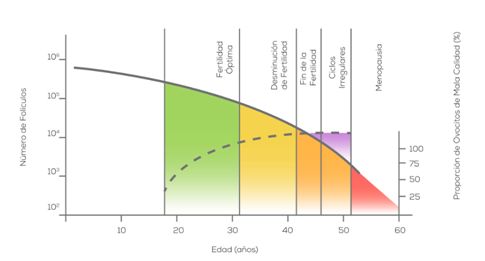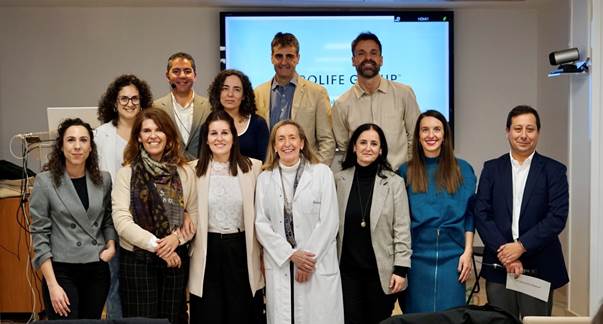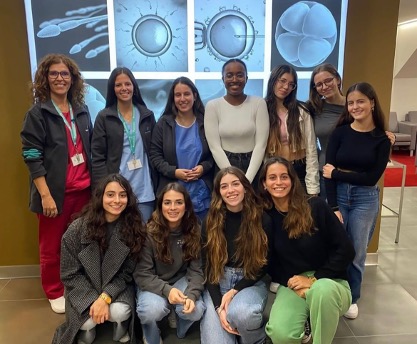
Mom and Dad
Mom and Dad
Understanding infertility
The human species has a low reproductive potential, with the maximum monthly fertility (chance of achieving pregnancy) of a young couple under 30 being no more than 30%. The reasons why fertility is so low are currently being questioned. With this in mind, sterility or infertility is defined as the inability to get pregnant after one year of regular unprotected intercourse, meaning, we shouldn't consider a couple to have a fertility problem until a reasonable period of time has passed since they started trying. In addition, we are considered to be in a situation of primary infertility when pregnancy has never been achieved without treatment and secondary infertility if, after a pregnancy achieved without treatment, more than 12 months have passed without a new pregnancy being achieved.
In developed countries, it is estimated that around 1,200 new couples per million inhabitants per year have infertility problems, which represents between 15 and 20% of couples who wish to become pregnant.
Although on some occasions longer periods can result in a spontaneous pregnancy, there is no doubt that these couples should seek out specialized centers to rule out possible pathologies and, if necessary, access assisted reproduction techniques.
Therefore, the medical study of a couple's (or a woman's) fertility should begin after one year of unprotected sexual intercourse. Several associated factors may be indicative of starting this study at 6 months, such as the woman being over 35, having menstrual irregularities, a history of pelvic disease, testicular abnormalities or surgery.
Infertility can be female, male or mixed when it is diagnosed in both members of the couple.
Infertility can be caused by many factors, both physical and emotional. It can be related to problems in the man, the woman or both. Furthermore, there isn't always just one cause of infertility, with two or more causes being found in almost 30% of cases.
Undoubtedly, the most important factor is a woman's age, since there is a reduction in both the quantity and quality of eggs with age. This decline occurs above all from the age of 35 and is much more pronounced from the age of 40.
As you can see from the graph, from the age of 35 the number of eggs drops sharply (solid line), and from the same age the proportion of poor quality eggs increases sharply (dashed line).

Assisted reproduction techniques have been developed to try to solve these problems and help more and more couples realize their desire to have a child.
It is estimated that 1,000,000 babies are born every year in the world as a result of these techniques. In Portugal, babies born after PMA represent 2% of all births, while in Spain this figure reaches almost 8%.
It should be taken in consideration that infertility is not only the difficulty in conceiving, but also the existence of factors that prevent a pregnancy from being achieved and continued, such as implantation failure or repeated miscarriage. We can talk about implantation failure when a person doesn't get pregnant after 3 or more cycles of in vitro fertilization or 2 of egg donation, as long as there are no obvious problems in the uterus and good quality embryos have been transferred.
On the other hand, we can talk about repeated miscarriage when there have been 3 or more consecutive pregnancy losses before the 20th week. This can also be primary or secondary, depending on whether there is already a child from a previous pregnancy or not. The etiology of these two pathologies differs between the different cases, and the type of treatment used also varies.
As you can see, reproductive problems can have very diverse and varied causes, so it is recommended that you go to a center that has experience in cases similar to yours, has professionals with proven experience in each area and has the best facilities and equipment to carry out your treatment in the best conditions.
In addition to the professionalism conveyed by the team, it is also very important that you feel comfortable with the treatment you receive from the very first moment, as the difficulties of getting pregnant can test your emotions and those of your partner. It may seem like an unimportant detail, but it's very important that you feel understood and supported at all times.
Another aspect to take into account is the economic cost. Assisted reproduction treatments are expensive, as they require a highly specialized human team and highly sophisticated technology. When comparing the costs of different centers, as well as taking into account the success rates of the treatments and the services they offer, don't forget to add the cost of travel, the days you stay or the days you have to take off work.
Areas and specialties
We offer all Assisted Reproduction treatments to Iera Quirónsalud patients


 First appointment
First appointment

 Artificial Insemination
Artificial Insemination

 In Vitro Fertilization
In Vitro Fertilization

 Egg Donation
Egg Donation

 Egg Reception
Egg Reception

 Fertility Preservation
Fertility Preservation

 Preimplantation Genetic Diagnosis
Preimplantation Genetic Diagnosis

 Genetic Compatibility Test
Genetic Compatibility Test



